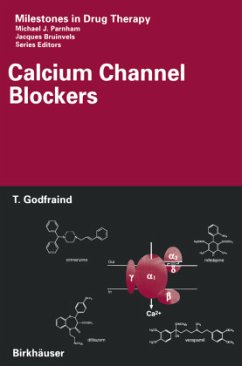The drugs named calcium channel blockers (CCBs) were initially termed cal cium antagonists (see Chapter 1). They are also designated as calcium entry blockers (CEBs), calcium blockers, calcium channel antagonists, calcium channel inhibitors (and in French anticalciques). As this is reported in several chapters of this book, their main effect is a blockade of calcium entry into cells through voltage operated calcium channels (VOCCs). Chemically related drugs, such as Bay K 8644, exert the opposite effect by increasing the proba bility of calcium channel opening. One of the subcommittees of the Nomenclature Committee (NC-IUPAR) of the International Union of Pharmacology has been devoted to the classification of calcium channels and the site of action of drugs modifying channel function. The members of this Committee are noted for their significant contribution to the field (Tab. 1). A report has been published in 1992 in Pharmacological Reviews [3]. A list of criteria was approved for the identification of distinct drug binding 2 sites on Ca + channels. It included: (a) the demonstration of a stereoselective binding site supported by drug interaction studies (competition with other drugs, non-competitive interactions with other sites, reversal of inhibitory effects by channel activators); (b) demonstration of the electrophysiologieal effects of the drug and selectivity of action compared to other sites; (c) deter mination of the affinity for the type and subtype of ion channel. These criteria have identified different classes of Ca antagonists (see Chapter 2).
Hinweis: Dieser Artikel kann nur an eine deutsche Lieferadresse ausgeliefert werden.
Hinweis: Dieser Artikel kann nur an eine deutsche Lieferadresse ausgeliefert werden.








